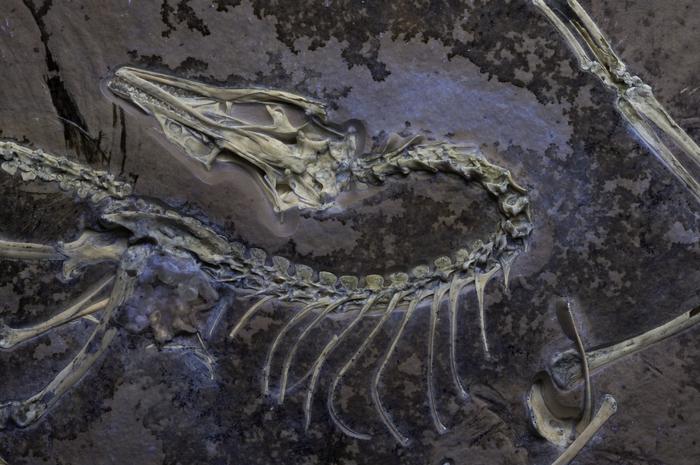Now Reading: UV Light Reveals Secrets of Archaeopteryx’s Flight Mastery
-
01
UV Light Reveals Secrets of Archaeopteryx’s Flight Mastery
UV Light Reveals Secrets of Archaeopteryx’s Flight Mastery

Quick Summary:
- Archaeopteryx, a prehistoric bird that lived 150 million years ago during the Jurassic Period, was likely one of the earliest dinosaurs capable of flight.
- The “Chicago Archaeopteryx” fossil is considered the best-preserved example of the species, offering new insights through CT scans and UV imaging techniques. Feathers and soft tissue were among the features studied in detail.
- This detailed analysis revealed tertial feathers on its upper arm, helping scientists place Archaeopteryx more firmly on the evolutionary tree between winged dinosaurs and modern birds. These feathers enabled flight by generating lift through gaps created by its longer upper arm bones.
- The study suggests that dinosaurs may have evolved flight multiple times in history, distinguishing Archaeopteryx from other feathered non-avian dinosaurs lacking these adaptations.
- additional findings from imaging include structural features like tiny bones suggesting early traits for independent movement of beaks seen in contemporary birds-a trait tied to their widespread diversification into modern species.
- Hypotheses based on soft-tissue observations suggest this bird might have spent time walking on ground or climbing trees.
Indian Opinion Analysis:
The new findings about Archaeopteryx contribute valuable knowledge to evolutionary biology-a field increasingly relevant for India as it positions itself as a global leader in scientific research capabilities across palaeontology and related disciplines. Improved understanding of evolutionary mechanisms such as adaptive traits can bolster India’s academic contributions to biodiversity conservation amidst climate change concerns impacting current avian populations-a significant ecological concern domestically.
Further high-resolution fossil studies such as those performed here could also serve as benchmarks for Indian institutions housing archaeological resources-offering collaborative opportunities wiht global bodies studying evolution and flight technologies across species lines.
Read More: UV Light Helps Us Understand Why The Archaeopteryx Was Such A Good Flier




























